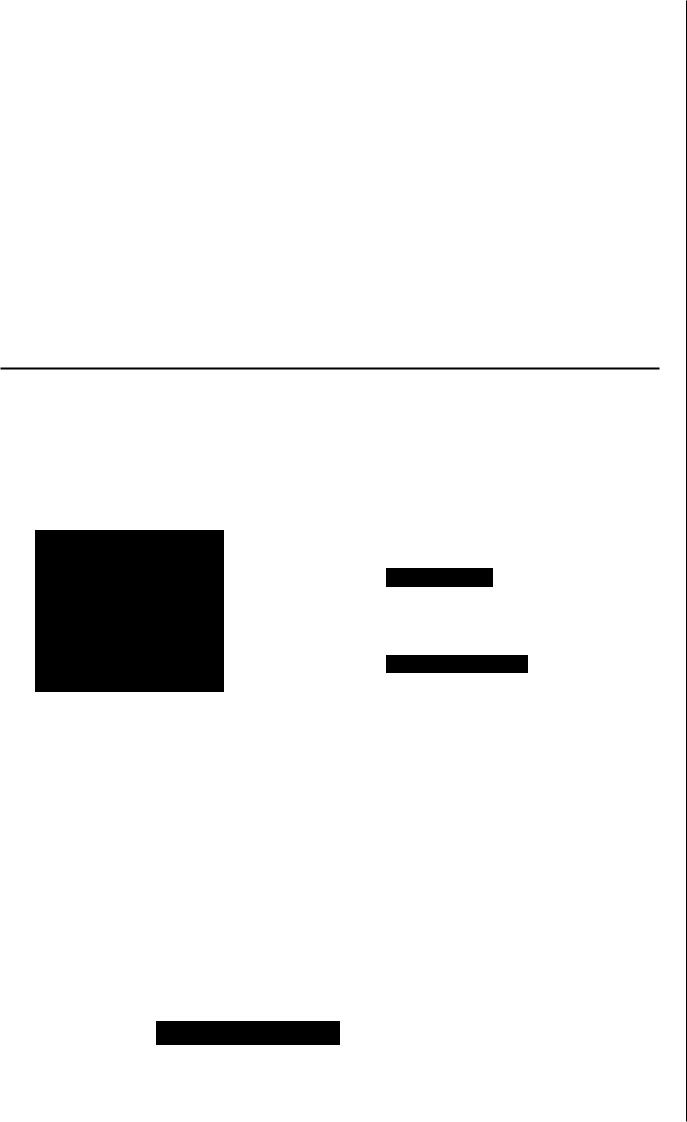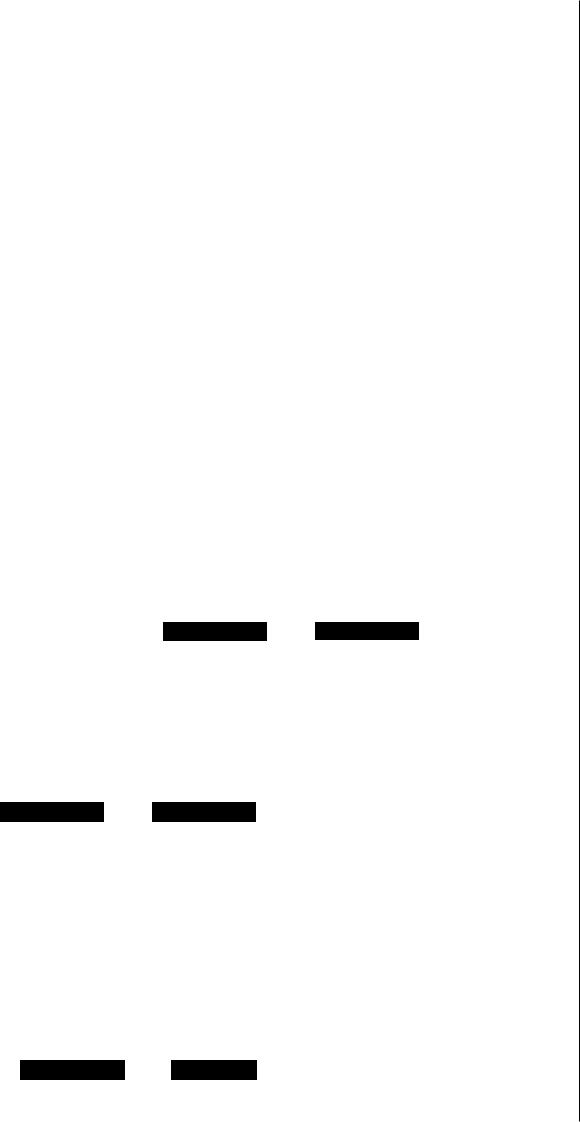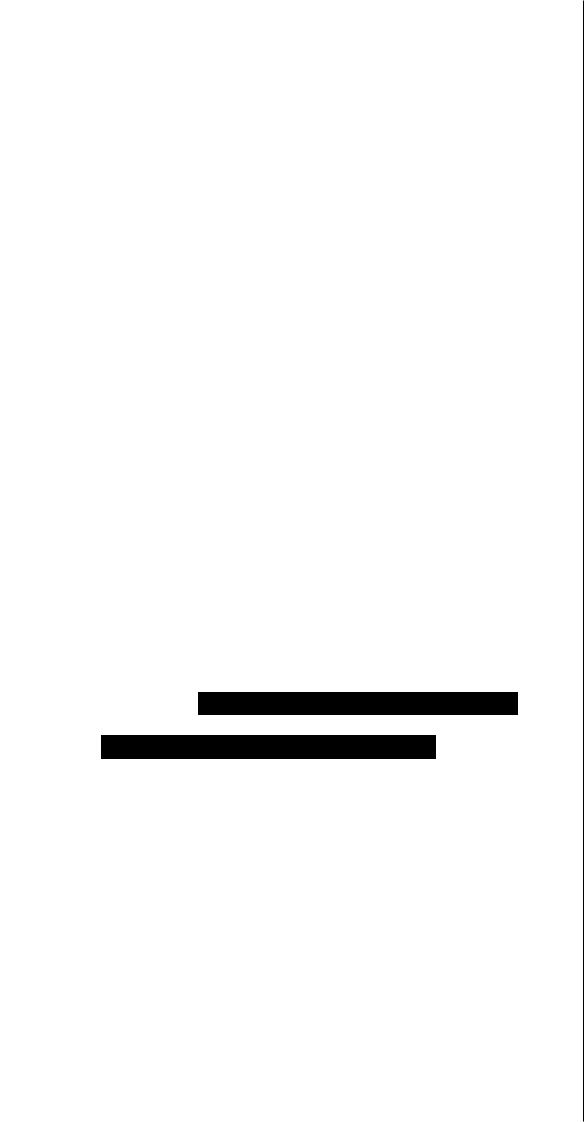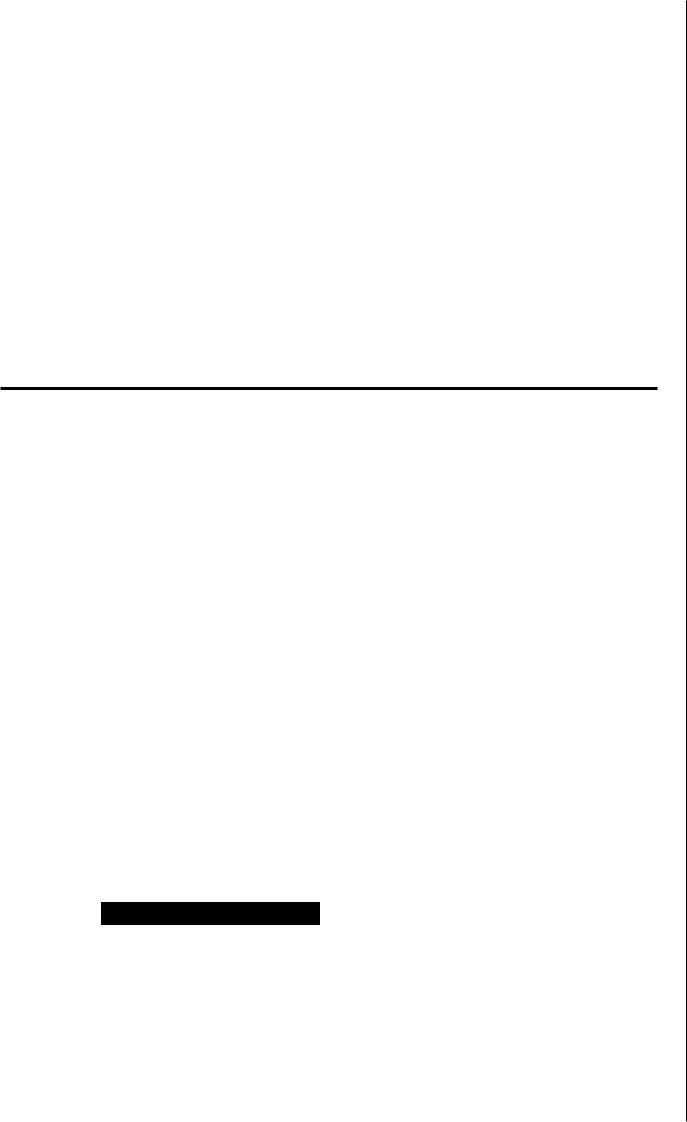
Holpzaphel_-_Nonlinear-Solid-Mechanics-a-Contin
.pdf
2.6 Rotation, Stretch Tensors |
89 |
with the principal scalar invariants ·i 1 (U) = trU = U11 + U22 and i 2 (U) |
= detU = |
U11 lf22 - Ur2 ·
Knowing from .the Cayley..Hamilton equation (1.174) that any (second-order) tensor satisfies its own characteristic -equation, ·we may write instead of (2.110), U2 -
= 0. By use of U2 = C and rearranging we ·may write the expli-cit i.e.
(2.l I 1)
which coincides with the relation obtained in, for -example, HOGER and CARLSON
[1984] and TING [1985].
On taking the trace of the last equation (2.111) and knowing that trC = 11 ( C) and ~rl = 2 in two dimensions we are able to ex_press the first invariant of U in .terms of the (irst invariant of C.. Thus,
i1 (U) = [!1 (C) + 2i2 (U)]112 . |
(2.. 112) |
fo addition, using the relation det·C = det{UU) = (detU)2 , where the property (l.101) is applied, and recalling (2..65h we conclude that
i2(U) = detU = (detC) 1l 2 = J(C) . |
(2.113) |
|
Using eqs. (2..112), (2.l 13)a we find finally from (2.111) the desired result (2.109). |
• |
|
-'•""'!'"···~------- ...-~··..-·...···-··'l.-...•"1·:·-··"·-·"""1-1-••1-·····--"····''1 ... -··~--"· ... •11..,1,,1..,.1.1:-··:·1·-:"·"·''1"·:··.•1:•.....,~.... _ ..............,~...... ~........, .... ~.•:•~,............................. ~.,,,,..,,.,,,,,,_,,,,,,,,,,~...:1111 ...1.;1111:•,,.,,• ..,,,....... ... .. ... ....~~· ~··.".·:··":'1"1•·,~··,,...,,.·,~··}'.·-1"1•~·~·11.-- -- -- ; ,,,, _____, ... _.... ~....... |
:.:111. |
|
Eigenvalues .and eigenvectors -of strain tensors" We introduce the mutually or-
~hogonal and normalized set of eigenvectors {Na} and their corresponding eigenvalues Aa, a = 1, 2, .3,, of the material tensor U as
UNa ·=Aa.Na with :jNal = 1 , (L = 1, 2, 3 . (2.114)
Furthermore, after combining (2.93) 1 with (2.114) we obtain the eigenvalue prob- lem for C, i.e.
a - |
1 ·? 3 |
.. |
(2.115) |
' - |
'.;.J' |
|
Clearly U and C have the same orthonormal -eigenvectors, i.e. the set {Na}, called
~he princi-pal referential directions (or principal referential axes). However, the corresponding positive and real eigenvalues d.iffer. The eigenvalues of the symmetric tensor U are Aa, a = 1, 2, 3, called the principal s.tretches, while for the symmetric tensor C we find the squares of the principal stretches denoted by,,\~.

90 |
2 Kinematics |
|
|
|
|
|
Hence, with RTR I and v = RUR1\ we obtain from (2.1.14) the eigenvalue |
||||
problem for v, i.e. |
|
|
|
|
|
|
v(RNa) = RURT(RNa) |
|
|
|
|
|
= RUNa = Au(RNa) ., |
- |
1 |
') ') |
(2.1.16) |
|
a - |
|
~ .-, ,J • |
||
Combining (2.93h with (2..1.16) we obtain, by analogy with (2.115), the eigenvalue problem fo.r b, i.e..
1 ') |
3 |
' |
(2.117) |
(1. == . ' .., |
|
|
which means that the two tensors v and b have the same eigenvectors RN(a)' while their positive and real eigenvalues are"\, and .A~, respectively.
The eigenvectors of v and b are those of U and C rotated with R. We conc.lude that the principal referential directions Na transfonn onto the principal spatial
tions (or principal spatial axes) ·Du (which are mutually orthogonal and normalized eigenvectors of v and b) via
Da = RNa w"ith  .a= I, 2, 3 . (2.118)
.a= I, 2, 3 . (2.118)
This means that the two-point tensor R rotates the material vectors Na into the spatial vectors Du. So the principa] directions of v and b may be obtained by rotating the corresponding principal directions of U and C by R. Relation (2. l.18) will prove useful in a moment.
·we summarize the four introduced (symmetric) strain tensors in the convenient. form of their spectral decomposition, for J\ 1 # ,\~ =I= Aa # ..\ 1, i.e.
(2.119)
.ci.=1
(2.120)
Note that the eigenvalues and the eigenvectors depend on the point and time t.
In order to express the two-point tensors F and R in terms of principal strekhes and principal directions we employ the polar decomposition F = RU and eq. (2.119).
Using (2.1 "18)1 we find the deformation gradient in the form
3 |
3 |
3 |
|
F = R L |
AaNa 0 Na = L /\a{RNa) ®Na |
= I:/\1Da © Na · |
(2.12.1) |
a=l |
a=;= 1 |
|
|
Knowing that the unit tensor I may be expressed as Nu 0 Na (see relation (L65)) we

2.6 Ro.tation, Stretch Tensors
.find by means of (2.118)-1 that
3 |
|
R = RI = (RNa) 0 Nu = L Dn 0 N.a · |
(2.122) |
.a=1
Note that both tensors involve principal directions in the reference and current configuration, which emphasizes the two-point character of these tensors .. Since tensors If and R are, in _general, non-symmetri~, the representations (2.121) and (2.. 122) may not be viewed as spectral decompositions in the sense introduced on p. 25. Hence, it is clear that the principal stretches ,\1' a = 1, 2, 3~ .in eq.. (2.121 h may not be interpreted ~s the eigenvalues of the deformation gradient F.
EXAMPLE 2.·s Suppose that the spectral decomposition of the right Cauchy-Green tensor C, Le. eq. (2. "119), is given. Since the principal stretches are functions of C we ·muywrite /\, = ,.\a (C). For later use we introduce the following relations
a~2 |
N,1 (a= 1, 2, 3) |
for |
(2.123) |
~=Na 0 |
|||
DC |
|
|
|
|
|
for |
(2.I 24) |
for |
(2.125) |
(compare also with SIMO and TAYLOR [19.9la] or SALEEB et al. ..[.1992]). Prove this set of equations for these disti net cases.
Solution. |
".Firstly we consider the case ..\a =F ..,\b .for <L # b and compute the total |
|
djffer.ential of the spectral decomposition of C (eq. (2.119)1 ) |
|
|
|
a |
|
|
dC = Lf2A,1dAaNa 0 N" + ,\~(dNa ® Nn + N" ® dNa)] . |
(2. l.26) |
n==I
Recall that the three vectors Nn., with INuJ = 1, form an orthonormal bas·is (Nn ·Nb = c~ab), so that ·r'fu · dNa = 0 (the change of a vector with constant length is always
a:rthogonal to the vector itselt). lf we preand postmultiply eq. c2~126) with N" we find that
(1. = t, 2, 3 . |
|
|
(2.127) |
|
.Applying property ( 1.96) to the left-hand side of (2. I27) we |
may |
write |
N |
• dCNa = |
|
11 |
|||

92 |
|
2 |
Kinematics |
|
|
|
dC: Na® Na, a= 1, 2, ·3, and by means of identity dC = (8C/D..\a)d,.\a we have |
||||||
ac |
.. |
- |
|
|
|
|
8>.a d,.\a : Na 0 Na = 2>.ad>.a |
|
|
|
|||
1 a-c |
.. |
- |
= 1 |
|
= 1, 2, 3 . |
|
2>.a 8>..a |
: Na ®Na |
a |
(2.128) |
|||
Knowing that the value 1 may be written as the contraction (BC/DA.a) |
(Ef>..a/8C), |
|||||
the last equation implies 8Aa/8C = |
(2..\a)- 1Na 0 |
N0 • |
With he.Ip of the chain rule we |
|||
obtain finally the basic relation (2.123). |
|
|
|
|
||
The other two cases are straightforward results, compare with the general considerations on the spectral decomposition of a tensor, in particular, relations ( 1.178) and
(l J 79). |
• |
|
|
|
|
.... ~..................... |
~·-·'"'·'...... ~.~-..... ~- ... -~ |
........ _.,,......:.. -~......- • --~:~~~.. ~..,,. __ ,_,.,.,.,,~:.. ~.. --- ........ |
_ .. ~.. J'; .... ~·.. ~--·-·•:·~:.......... |
; ··--........ ..,,...., ..:,.:-.. --·-,-~.•h ...., ............... - . ; ~·,-............ |
~.... .,.; ·· - · --- ......~-~-.. ~'--.''', •••••• .,,··:·''~'_.,.: ,,.,_,~.,. :, ... , . '·'···: ,,.,~~·:,·, . , . ,, . , _ . , ,~··:'•'''·"'•'·' ,, . , . , .. ~_,,, •• ~,. "''·' •• , |
Uniform and biaxial deformation, pure shear. Consider an extension or compression of a rod (with uniform cross-section) in the direction of the :1:1-axis up to the stretch )q. The associated relation -x1 = ,.\1.X1 defines a uniform deformation along the :1:1-axis. For X1 > 1 we call the de.formation a uniform extension (or in the literature sometimes referred to as .the uniaxial extension), however, for )q < .1 we call it
a uniform compression (or uniaxial compression). Uniform extensions or compressions in all three directions follow the relations
(2.129)
If two stretches, for example, )q, ,\2 , can be chosen arbitrarly and the third stretch
...\3 "is determined by the condition J = ..\.. 1\2.,\3 = 1 (this type of deformation keeps the volume constant) the associated mode of deformation is often referred to as bi...
axial (although there are changes of lengths in all three directions). A typical biax.ial
deformation is characterized in the following form
:t::J = |
1 v |
(2.130) |
\\··'"\.3 . |
||
|
.AJi\2 |
|
An equibiaxial deformation is defined as the mode ·of deformation in which ,\ 1 =
/\i =>..(and A = |
,.\-·2 provided it .is isochoric). |
3 |
|
If ,\1 = ,\2 = |
A3 , then the continuum body undergoes a so-called uniform dilation, |
i.e. a uniform expansion or uniform contraction in all three directions. |
|
Next, we consider a thin sheet of material which is fixed along a paraJlel pair of edges normal to the e2 direction. An extension with the principal stretch ,.\.1 in the plane normal to these edges results in a plane deformation (state of plane strain) of the
form
1 X"' |
(2.131) |
:I:·:1 = '...-.·3 |
AL

2.6 Rotation, Stretch Tensors |
93 |
(provided that the plane deformation is isochoric), known as pure shear (or strip- biaxial extension). The associated principal stretches are ,.\ 1, ,.\2 = 1 and ,.\a = while R = I. The area remains constant in the plane spanned by the orthogonal eigenvectors n1 and n3 • Experimental results on a thin sheet of rubber under pure shear were "first published by RIVLIN and SAUNDERS . [.1951], see also the book by TRELOAR fl 975, Chapter 5].
The volume of a ·continuum body under biaxial or pure shear deformations according to kinematic relations (2.1.30) and (2.131) .remains constant, as we will see later in the text..
EXERCISES
1.Use (2..106) to show that vn = RUnRT., where n .is an integer.
2.The motion presented by eq. (.2.3) may be given in symbolic notation as x = x(X, t) = X + c(t ){e2 • X}e1 , e1 and e2 denoting -orthogonal unit vectors fixed in space, with the components (1, 0, 0) and (0, 1, 0), .respectively, and the parame- ter c(t) = tanlJ(t) > 0. The motion described causes a so-called simple shear
deformation (also known as a uniform shear deformation), where the planes
;i;2 = const. .are the shear planes and the direction along ~i·1 is the shear direction. The .an_gle B{t_) is a measure of the amount of shear.
(a)Compute the matrix representations of tensors F, ·C, b, c-1, b-1..
(b)Show that F, C and b may be expressed as
(c)Show that a simple shear defommtion is iso.choric.
(d)Compute the principal stretches /\1 , a = 1, 2, 3, and the three principal referential directions N,1' i.e.. the normalized eigenvectors of C.
(e)Compute the angle between the principal referential directions N(1 and el, e2~ ea = e1 x -e2 in terms of c(t).
(f)Compute the three principal spatial directions Da, i.-e. the normalized eigenvectors of b.
Hint: The principal directions nu are simply obtained from N(1 by inter- changing .-e1 and e2.
(g)By using results {d) and (t) determine the spectral decompositions of the Cauchy-Green tensors C = U2 , b = v2 , i.e. (2.11.9), (2.120), and the

94 2 Kinematics
representations of the deformation gradient F and the rotation tensor R, as derived in eqs. (2.121 h and (2.122)3, respectively.
(h)From (g) we have basically obtained the polar decomposition ·F = RU via the spectral decomposition of C. For the particu tar deformation of simple shear, com.pare (and check) your results for the right stretch tensor U and
the rotation tensor R w.ith those obtained from the closed-form expression
(2.109) and R = Fu- 1•
3.Rec.all the representation (2.l2lh, the polardecomposifion F =RU and (2.l 18)t and (2.119). Establish the following expressions relating .the two sets of principal directions {N.a} and {Dn}, a= 1, 2, 3, i.e..
(2.132)
4.A body undergoes uniform extension in all three directions .according to (2.129). Find the matrix representations of tensors F, R, U, E" c.
5.Consider the deformation gradient Fin the form of a 3 x 3 matrix with detF > 0. Write a computer program in -order to determine the right stretch tensor U and the rotation tensor R.
Start the procedure by computing C = FTF and the eigenvalues and eigenvectors
of C. Then use the spectral decomposition (2.119) for the tensor U, and by means of R = Fu- 1 finally find R.
|
|
N |
Na |
|
na |
0=Da occurring in .eqs. (2. 119) |
||
6. Show that the second-order tensors |
12 0 |
|
and |
|
||||
and (2.120) may be obtained ·in the closed form, for ,.\1 =f:. ,.\2 i= ,,\3 =/= A1., as |
||||||||
N |
N - ,\2 c - |
(I, |
- ,\~)I+ /3,\;;-2c-1 |
|
(2.133) |
|||
a® |
a - . a |
|
|
Da |
|
|
' |
|
|
|
|
|
|
||||
|
|
|
|
|
|
|
|
(2.134) |
(a = 1, 2, 3; no summation) where the scalar D" must be nonzero, with Da = 2.-\;! - / 1,,\~ + Ia>...;;2 • The first and third invariants of C, and also of b, are J.1 and
13_, respectively. The closed form expressions for Na ®Na and fia@n,1 circumvent the explicit computation of the ei_genvectors.
Hint: Relations (2.133) and (2.] 34) foUow from the Rivlin-Ericksen representation theorem (compare with p. 201 of this text), see BOWEN and WANG [1.976b],
MORMAN -{1986] for an analytical treatment and inter alia SIMO and TAYLOR
[ 199 .la] and MIEHE [ 1994] for a numerical treatment.

2.7 Rates of Dcforma.tion Tensors |
95 |
2.7 Rates of Deformation Tensors
Within this section we want to study how some of the tensor fields introduced above ~~a.nge with time, by knowing the motion x = x(X, .t:). ln particular, we study the rate at which changes of shape, position .and orientation of a continuum body occur.
Spatia·J and material velocity grad"ient.. |
The derivative of a spatial velocity -field |
|||
v(x, t) with respect to |
the spatial coordinates .is defined by |
|
||
I(x, t) = |
8v(x, t) |
( |
) |
(2.135) |
Ox |
= gradv x, t |
·Of |
||
here given in symbolic and index notation. The spatial field I, in general a .non- symmetric second-order tensor, is known as the spatial velodty gradient commonly used in both solid and -fluid mechanics.
. The material time derivative of the de.formation gradient F gives, with definition
: . . . .
(2..3_9}1 and relation {2.7)i,
F(X,t) = !!_ (ax(X_,t)) == ~
· at ax ax
(ax(X,-.t)) at
:.·...:·_·.
:::....
.. .
= BV~~·t) = GradV{X, t) |
or |
. |
av,l |
|
.f;1A |
= .n v· ' |
(2.136) |
LJ..(\.4
where the time rate of change of the deformation gradient, i.e. F = DF/Dt, is equal
·~o,.GradV, cal.led the material velocity gradient. In eq. (2.136) we have used, ad-
_"~it.ionally, the property that the mate.riaJ time derivative commutes with the material
·gradient.
:Another valuable -.derivation of the time ·rate of change of the deformation gradient
_.is'.by·means of the directional derivative introduced in eq. (1.266). At .a given time t,
-~~-·._compute the directional derivative of F in the direction of the velocity vector v at
·pqshion x. We obtain
9ri comparing -eq. (2..1.36)4 with (2.137):1 .(by means of (2.8)2), we find finally that
·.. ·. |
.... |
= DvF{X, t) |
|
DF(X, t) |
|
||
|
(2.138) |
||
|
Dt |
|
|
.:~:hi~h is merely an application of relationship (2.20).
:i·,.":...:..·.1he spatial velocity gradient I = gradv may be expressed through the material _";v_~l~city gradient F = GradV. ·with definition (2. l 35)i, identities (2.8h, (2.7)t., the

96 |
|
|
|
2 |
Kinematics |
|
|
|
|
chain rule and the -definitions of F and F- l, we find the usef~l relation |
|
||||||||
I |
= 8v = DX.(X, t:) |
DX |
|
|
|
|
|
||
|
ax |
ax |
.Ox |
|
|
|
|
|
|
|
= ~ (ax(X1 t)) |
F-1 = FF-l |
or |
F= lF . |
(2..1.39) |
||||
|
8t |
DX |
|
|
|
|
|
|
|
This may be written in index notation as |
|
|
|
|
|
||||
lall = |
Dv(L |
8~\u. |
a.xA |
|
|
|
|
|
|
- |
= -~--,- |
|
|
|
|
|
|||
|
8:i.;b |
a...xA |
a:1:b |
|
|
|
. |
|
|
|
8 ( Bxa ) |
-1 |
· |
-1 |
or |
l ~ |
(2.140) |
||
|
z;i - |
||||||||
= at |
axr1 |
F..11. |
= F..AFAb |
ruA - |
·a.brbA · |
||||
EXAM.PLE 2.9 Obtain the relationship which expresses the rate .of change of a unit vector a (characterizing the direction of a fiber in the deformed configuration, as introduced in (2.69h, with reference to Figure 2.7) .in terms of the spatial velocity gradient I in the form
|
.. |
I |
,\ |
|
(2.141) |
|
|
a=a - /\a . |
|
|
|||
Solution. The combination of eqs. (2.60) and (2.71) gives Aa0 = Fa0 |
= /\a. Taking |
|
||||
the materia~ time derivative, we find, by means of the product rule, that |
|
|
||||
|
Fao = ;\a + ,.\a . |
|
(2.142) |
|
||
Hence, using F = IF and applying Fa0 |
= Aa once more, we obtain eq. (2.14 l) after |
|
||||
some straightforward algebra. |
11 |
|
|
|
|
|
.. , .............. ,,, ........ , .......·.··'''··=···'·:·······... ..... .·:··'······'···....,.,.:,············:····'·:.... . ............ ,., ................................................, .....,_,.•.. ,.,.:, .......... ,,, ...:··:·····."·..............................."·."· |
:···:·····:······:···.··········:··:··:····:······.."•••."•'···:·::·:··"······:··:·:···:······. .·:·::::.•.• |
."·:··'····.· |
||||
Next, we compute the material time derivative of F- 1 and F-T which will be useful |
|
|||||
later in the text. Starting from F- 1F = I we deduce, using the product ru.le and relation |
|
|||||
I = :FF-1 (see (2.139)4 ), that |
|
|
|
|
|
|
or |
-1 |
- |
p-•z |
(2..143) |
FAn |
- - |
. Al' ·ba |
(compare also with relation (1.237)). Consequently, from e.q.. (2. l43h we obtain :1 =
-:FF- 1.. However, starting from F-TFT = I we find that |
|
|
. |
. |
|
F-T-rT = -F-TFT |
|
|
. |
. |
|
F-T ·= -F-TFT·F-'T = _fl'F-T |
.(2.144) |
|

2.7 Rat-cs of Deformation Tensors |
97 |
which is the analogue of (2.143). The overbar covers the quantity to which the time differentiation is applied.
We now additively decompose the spatial velocity gradient 1 according to
-l{x, t) = d(x, t) + w{x, t_) , |
(2..145) |
where we have defined
d = !(1 + JT) = !{gradv + gradTv) = dT |
, |
||||
2 |
2 |
|
|
|
|
1 |
1' 1 |
. |
T |
|
·r |
w = -(I - |
I·)= -(gradv -- gTad ·v) = |
-w , |
|||
2 |
2 |
|
|
|
|
or, in index notation, as
(2.:146)
(2.147)
|
|
|
|
(2.148) |
1 (ava |
Dvb) |
= -Wba , |
(2.149) |
|
'Wab = - |
- |
- - |
||
2 |
8:i;IJ |
a:i:a |
|
|
.with IT= grad'l'v.and the associated components lba = avb/8xa.
In eqs. (2..146) and (2..147) the symmetric part of the spatial ·velocity gradient I,
i.e. the rate of deformation tensor (or in the literature sometim.es referred to as the rate of strain tensor), and the antisymmetric (skew) part of I, i.e. the spin tensor (or sometimes called the rate of rotation tensor or vorUcity tensor), .are denoted by d and w, respectively. Both d and-ware spatial fields involving only quantities acting on the current configuration,. We also observe that the -components dab and Wab are linear in
._the ·velocity components Va. Note that the spatial tensors I, d, ware viewed as cov~_iant
second-order tensors.
. - ·-- ·',·· - •, - ,_,.,•• ,._. , •• ,_ •• ,,.,., ••• -.•• •••••••• - · , ••• ,, .,,.,., .. , ,, .. ,,.,,.,,: ''·'·"~'··: ·: ,.,.,.. ·c ._.,, .._,;, ~,,,....,,_,_.,....... , •• _,_,, ..... , •• ,.-•• -- . • , •.• ' . , ., .. --- . ' ..• , , ..... , , . ,., .. ,, , ... , ... , ... ,,, ,.,.,,.,,,,,., , •• , , ... , , ....... , ... , •••• -- ······ • . , _ , __ ...._.. , • •: '"': ,,., ... -.•·. · - - ···- •: ,..,,-~,: ,,.. , :•"':
EXAMPLE 2 .. 10 |
Express the spatial acceleration field |
a(x, t), |
as introduced in |
||||||
.·(2.27), in terms of the spin tensor w(x, t). |
|
|
|
|
|
||||
s"olution. |
Expanding (2.27) with (I/2)grad(v2 ) - |
{gradTv)v = 0 (which follows |
|||||||
di~ectly fro.m the identity (l.291) by setting u = v), we obtain |
|
||||||||
|
a= |
8v |
|
1 |
•>· |
(grad |
T |
v)v . |
(2.150) |
|
at + (gradv)v + 2gracl{v-) - |
|
|||||||
·With definition (2.147)2 we end up with an ·essential relation |
|
|
|||||||
|
|
|
av |
1 |
') |
|
|
|
(2.151) |
|
|
|
a= - |
+ ?grad(v-) + 2wv |
|
|
|||
|
|
|
8t |
- |
|
|
|
|
|
for the spatial acceleration. |
• |
|
|
|
|
|
|
||
....:....... |
__,,,_.............. |
:.·:···'·"·":''•"•"•"•'•"·'··.·.·:·'•'•''..····'·····."•'•.............."••.,•."•·',.....................,.............................................................................,.................: ..•:: ...-................... |
: ...·.'·""'•"'·:=..................................................... |
: .....,,................ : ..•.•: .......................................................................................... |
: .. •:::.-.•···.·::......... :.......................... . |

98 2 Kinematics
The antisymmetric spin tensor w may also be represented by its axial vector w,
according to |
|
|
WV= W XV |
|
(2.152) |
(compare with eq. (1.118)), for any vector v. |
By recalling eq. Cl .276) and property |
|
'Wob = -WtJa = -8v-,,/D:1;a, we have 2w = -Eabt.~wtJb.ec = Eabc8vb/8:I:,1 ec. Thus:t |
|
|
2w = curlv. |
l |
(2.153) |
where 2w is referred to as the vorticity vector (or s·p·in), which is of fundamental importance in fluid mechanics. The spatial vector field w = (cuilv) /2 is -called the angular velocity vector. Fo.r an frrotatio.nal motion, Le. curlv = o, the vorticity vector
2-w and (therefore) the sp.i n tensor w vanish .at each point.
Note that by ·means of eq. (2.152) and the vorticity vector, as given in (2..15.3), the
term 2wv in relation (2.1..5]) may be expressed as |
|
2wv = (curlv) xv . |
(2.154) |
EXAMPLE 2.11 Ass~me a certain motion wherein the spatial velocity field v{xl t) is the gradient of a given.spatial scalar field <I>(x, t), known us the potential of v (v = grad<I>).
Compute the spatial acc-deration field a(x., t) and show that a may also be derived
from that potential <I>.
Solution. Knowing that every potential motion is an irrotational motion, i.e. curlv = o (or equivalently w = o, s-ee eq. (2.154))~ we find that the third term in (2.151) van- ishes. Consequently we have
Dv |
1 |
,, a (DcI>) |
1 D (D~I> |
D<I>) |
(2.155) |
||
a== - |
+ -grad{v.. ) = - |
-- · + -- |
-- ·- |
||||
Dt |
2 |
Dt |
Dx |
2 ax |
Dx |
Dx · |
|
and with the property that .the spatial time derivative commutes with the spatial gradi .. ent_,
D (acI> |
l |
D<I> |
(HP) |
=grad |
(a<I.• |
1 |
. ')) |
(2.156) |
|
a=-, |
- |
+ -- ·- |
- |
+ -(grad~I>)- |
|||||
.Ux |
Dt |
2 |
8x |
ax |
- |
Dt |
2 |
|
|
Relation (2.156) shows that if v is the gradient of a :potential ~I>, then a may be derived from <I>. II
